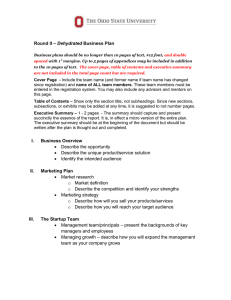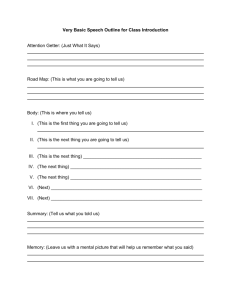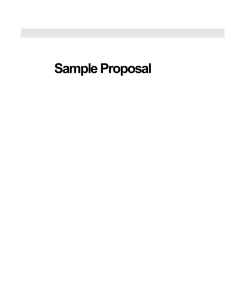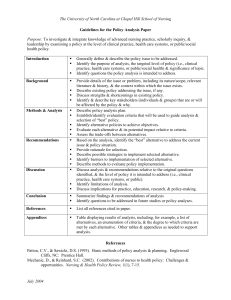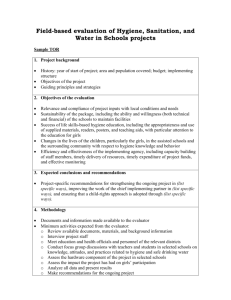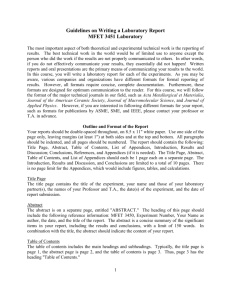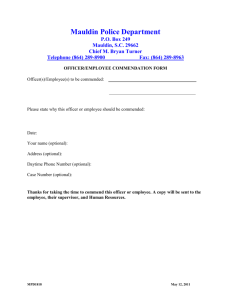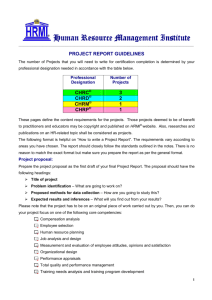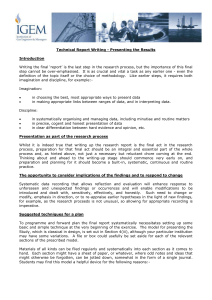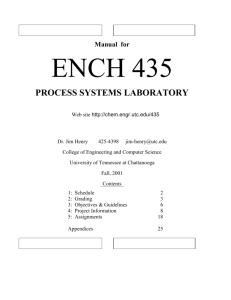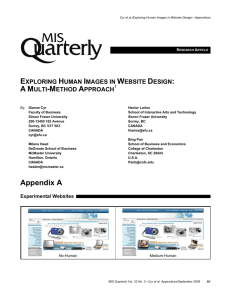TERM PROJECT REPORT FORMAT General Guidelines Report
advertisement
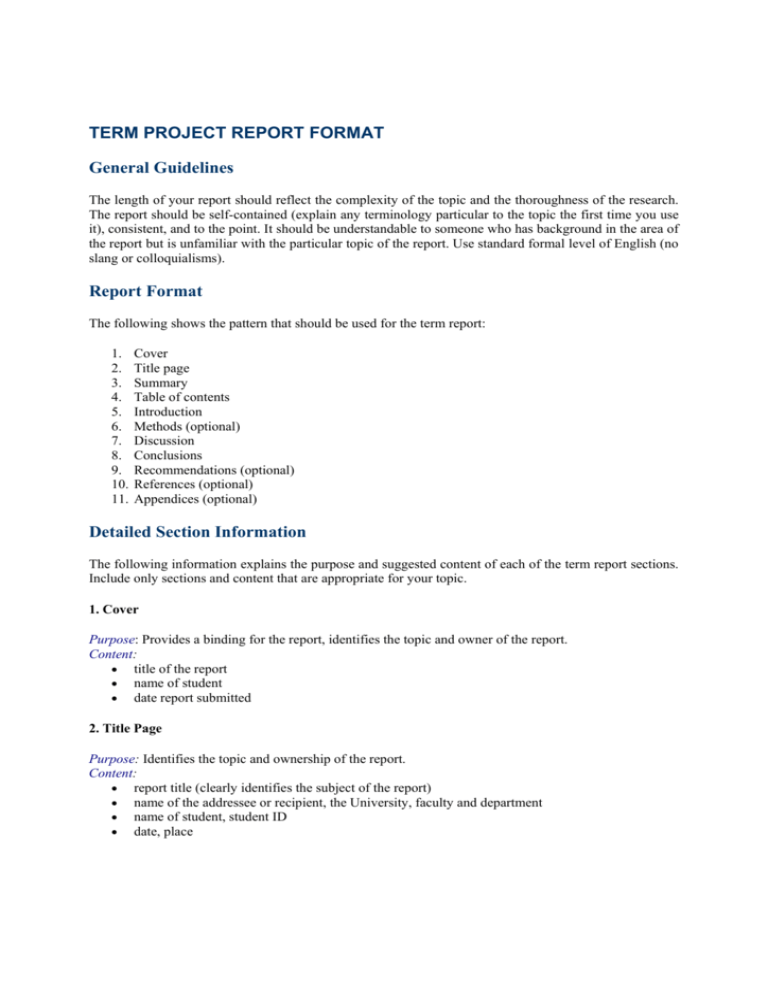
TERM PROJECT REPORT FORMAT General Guidelines The length of your report should reflect the complexity of the topic and the thoroughness of the research. The report should be self-contained (explain any terminology particular to the topic the first time you use it), consistent, and to the point. It should be understandable to someone who has background in the area of the report but is unfamiliar with the particular topic of the report. Use standard formal level of English (no slang or colloquialisms). Report Format The following shows the pattern that should be used for the term report: 1. 2. 3. 4. 5. 6. 7. 8. 9. 10. 11. Cover Title page Summary Table of contents Introduction Methods (optional) Discussion Conclusions Recommendations (optional) References (optional) Appendices (optional) Detailed Section Information The following information explains the purpose and suggested content of each of the term report sections. Include only sections and content that are appropriate for your topic. 1. Cover Purpose: Provides a binding for the report, identifies the topic and owner of the report. Content: • title of the report • name of student • date report submitted 2. Title Page Purpose: Identifies the topic and ownership of the report. Content: • report title (clearly identifies the subject of the report) • name of the addressee or recipient, the University, faculty and department • name of student, student ID • date, place 3. Summary The summary is considered by many to be the most important part of a report. It is a difficult part to write and should always be written last. It is often the only part that managers in the work place have time to read, so it is important to state your case succinctly (normally less than one page). Purpose: Provides a brief summary of the report, an information abstract. No reference is made to any part of the report; a summary is complete in itself. Content: • states the more important information in the report • the purpose, method, reason for the report • the findings, conclusions, decisions, recommendations • all major generalizations or assumptions of the report 4. Table of Contents Purpose: Identifies contents and organization of document. Content: • section headings • page numbers 5. Introduction Purpose: Introduces the subject of the report to the reader. Remember that the reader may be from a different branch of the discipline, and will require some orientation to the subject of your report. Content: Subject and purpose of the report: states briefly why the report is being written and what the report is intended to achieve. • • • scope: describes how broad or how limited the treatment of the subject will be plan of development: outlines which areas will be covered thesis of the report: the general conclusion and/or the general recommendation 6. Methods Purpose: The methods section details precisely how the study was conducted, how the data were collected, classified and analyzed. The acid test of a Methods section is that it should contain sufficient detail to allow a competent researcher to repeat the study. Thus, the Methods section should be comprehensive, while avoiding irrelevant detail. Content: Should be complete and precise detailing the preparation of solutions, and your step-by-step procedure. 7. Discussion Purpose: Presents evidence (facts, arguments, details, data, test results, etc.) necessary to the purpose of the report. Content: This section contains the main part of the report. All evidence must be developed in an organized, logical and orderly manner. All information must be relevant. This section should contain pertinent figures, tables, footnotes, and references to material in appendices. Any additional supporting information should be placed in an appendix but referenced in the discussion. 2 8. Conclusions Purpose: States briefly the major inferences that can be drawn from the discussion. Content: • must be based on information presented in the discussion • each conclusion should be presented as a separate paragraph, with paragraphs numbered in sequence for easy reference • never suggest or recommend future action 9. Recommendations Purpose: Suggests a course of action based on the findings and conclusions. Content: • must follow logically from the conclusions • must be supported both by the conclusions and by the data in the discussion References Purpose: Acknowledge use of material from printed sources in the preparation of your report. Indicate exact source of all quotations and/or results of previous work. Content: • • author's name, title of book, year published, publisher's name, city, ISBN number, page number bibliographic entries are listed alphabetically by the name of the author or by the first major work of the title Example: Vetterli, C. "Work term report Guidelines", Co-op Journal, Vol. 1 No. 1, August 1992. • common knowledge does not require a reference, e.g. the speed of light, the atomic weight of some element. If a new value for a commonly accepted quantity is cited, the source should be referenced. 11. Appendices Purpose: Include data that is not necessary to an immediate understanding of the discussion. Content: • appendices can contain program listings, drawings, technical specifications, or other detailed explanations of some aspects of your report 3
